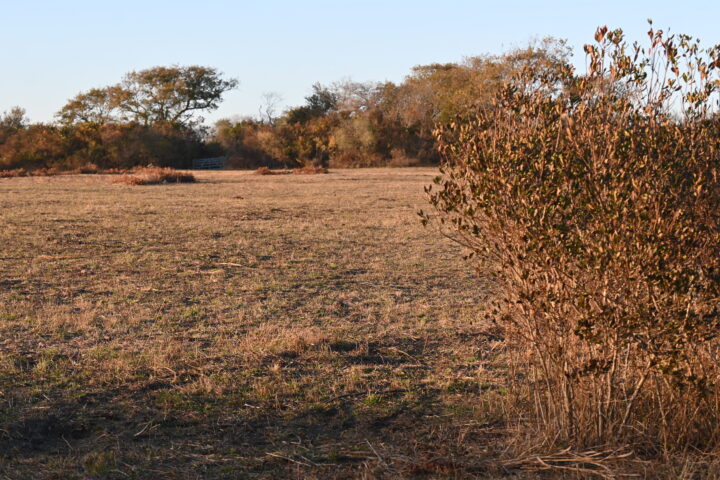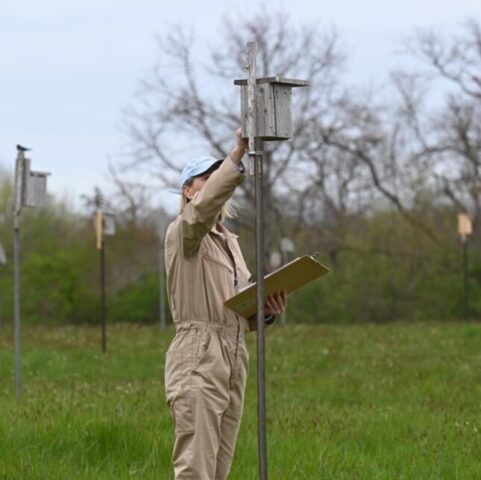Kathleen Matthews is passionate about understanding the health of local waterways through water quality testing, which can help identify point-source pollution from sewage leaks, treatment plants, and other sources. She holds a Bachelor of Science in Environmental Science with a concentration in Marine and Coastal Resources from Texas A&M University–Corpus Christi (TAMUCC). As the Norman Bird Sanctuary TerraCorps Land Stewardship Coordinator, Kathleen focuses on natural resources management including land conservation, land stewardship, community engagement, and sustainable agriculture.

Salve Regina University student, Aidan Tucker, gathers water samples along the Gray Craig Trail with TerraCorps Land Stewardship Coordinator, Kathleen Matthews.
What is the Water Quality Monitoring Program?
Norman Bird Sanctuary is launching its Water Quality Monitoring Program to better understand the health of the water systems across the 300 acres we protect. This includes testing ocean water at Third Beach and freshwater ponds and streams across the Sanctuary.
What will you be testing?
We are testing for a variety of parameters, including:
- pH
- Salinity (Saltwater only)
- Nitrate
- Total/Free Chlorine
- Dissolved Oxygen (DO)
- Ammonia
- Phosphate
These tests measure a combination of nutrients and human-influenced substances that may be present in the water.
Why is this testing important?
Monitoring water quality helps us evaluate the health of the diverse ecosystems at Norman Bird Sanctuary. Each test provides key insights into the state of our water:
- Dissolved Oxygen (DO): Indicates the amount of oxygen in the water, which is essential for aquatic wildlife to survive and thrive.
- pH Levels: Different species, such as frogs, salamanders, and fish, require specific pH ranges to live.
- Chlorine: Testing for chlorine can identify potential leaks from nearby water treatment systems or sewage, as chlorine is not naturally found in these waters.
- Nitrate, Ammonia, and Phosphate: These results reveal nutrient levels and potential sources of runoff, such as fertilizers, that may impact the ecosystem.
What will this program achieve?
By establishing a baseline of water quality data, we can identify areas in need of restoration and measure the success of our efforts over time. Understanding these key factors allows us to take meaningful steps to protect and improve the health of our aquatic ecosystems.
What’s next?
With this foundational knowledge, we can begin aquatic restoration projects to improve water quality and support the wildlife that relies on these habitats. Stay tuned for updates as we share our findings and progress!

